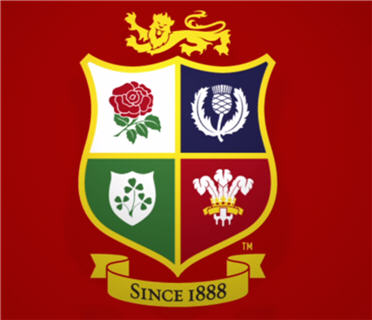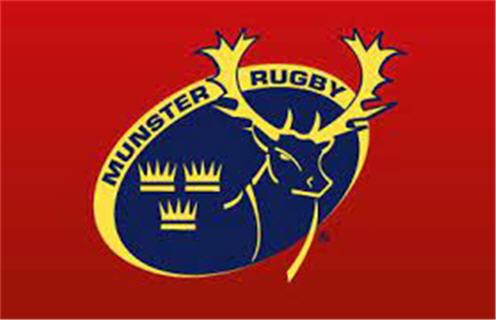Here is our pick of the greatest Irish rugby players that we’ve seen play.
As we run through their most memorable achievements, we explain why they are top of our list.
How We Chose Our Shortlist
We restricted selection to players that played since 1980. Why? Because we saw them play!
That rules out Irish legends like Mike Gibson, Jack Kyle, and Willie John McBride.
We also ruled out players who are still playing at the highest level. Someone like Jonathan Sexton or Tadhg Furlong may displace one of choices…but not just yet.
#1: Brian O’Driscoll (Centre)

O’Driscoll occasionally played at inside centre to accommodate a young teammate, but the Irishman is indelibly associated with the 13 jersey.
He had played flyhalf at school and university, but his college coach moved him to centre. His talent had been spotted at under-age level when an Irish U19 team won a junior World Cup tournament.
O’Driscoll was capped for Ireland in 1999 at the age of 20 before he played for Leinster, his professional club. That is a rare occurrence.
Early years
The following year, the young centre burst onto the international scene by scoring three tries against France in the Six Nations. It was the first win in Paris for the men in green since 1972!
Keith Wood had been Ireland’s talisman for the previous decade. Wood is on our list of greatest hookers in rugby.
As O’Driscoll’s star rose, Wood was coming to the close of his career. When Wood hung up his test boots in 2003, a young O’Driscoll was appointed captain.
By that time, Eddie O’Sullivan had taken over from Warren Gatland as the Irish coach. O’Sullivan was an innovative attacking coach who had the good fortune of having an outstanding crop of young backs on his hands.
O’Driscoll formed a centre partnership with Gordon D’Arcy at club and international level that propelled their teams to new heights.
Key skills
O’Driscoll is one of the most complete players I’ve ever seen.
He had a decent kicking game and bagged several drop-goals through his career. He had outstanding passing skills, with many teammates benefitting from a deft offload or a long wide pass to the wing.
He became the best defensive centre in the world as he grew older.
His reading of the game allowed him to shut down wide attacking moves before they started. Standing wide, he would either edge forward into the flyhalf’s vision or shoot up late for a big tackle. He was also a king of interceptions this way.
O’Driscoll was also a king of turnovers by getting over the ball after the tackle. He was often described as an extra flanker in defence.
Attacking play
But enough about kicking and defence.
O’Driscoll had people on the edge of their seats for his attacking play. He had outstanding acceleration and could seemingly swerve to change direction at full pace.
He scored many break-away tries from a distance. But his strength and timing gave him plenty of short-range tries from burrowing through forwards to the try-line.
And sometimes he just ran the perfect supporting line to take the final pass. This is one of my favourites. He still had a bit of work to do to get the try!
Audacious acts
There were times when O’Driscoll did stuff for fun that few players would dare try in a professional match.
Like that time when he beat a defender by passing the ball…to himself. You’ll find a clip in the linked article.
What about a “through the legs” pass that ends in a try? Yep, he’s done it several times (check the link for a clip).
How about chipping the ball over one defender, volleying it over a second defender, gathering, and racing to the line? It has to be seen to be believed!
“It’s mesmeric by Ireland’s genius,” yells the Irish commentator. Will Greenwood is the second commentator. The outstanding former centre is almost purring with delight.
Club achievements

Ten years after he made his club debut for Leinster, O’Driscoll was outstanding as Leinster made their way to their first European Championship trophy.
Their quarterfinal is best remembered as the infamous Bloodgate game against Harlequins.
In the derby semi-final against Muster, O’Driscoll intercepted the ball in his twenty-two and ran the length of the field to score a try. He landed a drop-goal in the final against Leicester.
Leinster and O’Driscoll repeated their European triumph in 2011 and 2012. In this latter phase of his career, he had propelled a middling club to the highest standards.
O’Driscoll and Ireland

By 2009, Ireland hadn’t won a Grand Slam in sixty years.
O’Driscoll captained his national team to win all matches in the 2009 Six Nations. The great flyhalf Jack Kyle was in the crowd to watch them lift the trophy. Kyle had been on the 1961 victorious team.
Ireland were competitive over the next five years, but couldn’t win away consistently. That left them falling short of taking the Six Nations title.
They finally won the tournament again in 2014 in O’Driscoll’s final year. They had to pull off a win in Paris, which they hadn’t done since his famous hattrick fourteen years before!
O’Driscoll had announced he was hanging up his boots and there was an emotional momentum from team and fans alike. He bookmarked his career with the Paris win and a tournament trophy.
With several victories against the Wallabies and the Springboks, it seemed like O’Driscoll’s Ireland could beat any team on their day except the All Blacks. (They weren’t alone in the list of countries who had never beaten New Zealand).
Ireland came close in 2013 and were leading with minutes to go. O’Driscoll had left the field after a blow to the head and All Blacks needed a last-ditch try to win.
So, O’Driscoll never got that fabled scalp. He was a happy onlooker in Chicago when Ireland got their first win against New Zealand in 2016.
O’Driscoll and the Lions

The centre had a chequered history with the Lions. But he’s one of the very few who was selected for three tours.
The youngster’s hat-trick for Ireland in Paris had put him on the map. The following year, he joined the British & Irish Lions tour to Australia.
O’Driscoll lit up the first test with a dazzling score that is still rated as one of the best Lions tries. The Lions won that match but lost the series.
It was a measure of his stature in the sport when he was named captain for the 2005 tour to New Zealand.
The All Blacks also had him marked as a threat. He was spear-tackled in the opening minutes of the first test and missed the rest of the series.
Four years later, O’Driscoll formed a formidable centre partnership in South Africa with the big Welshman Jamie Roberts.
The Lions lost the first test in a spiky affair. The second test is widely considered to be a classic. But it was also a brutally tough encounter that ended with at least five players in hospital – including O’Driscoll.
This time it was his own fault. He tackled too high and clashed heads with the ball carrier.
You can get a feel for the game from our article on Lions rugby quotes. I included Jamie Heaslip’s description in his autobiography.
O’Driscoll was back in Australia for the 2013 Lions tour. He played in the first two tests which ended in one win and one loss for the Lions. The series would be decided in the third test.
To the surprise of many, Warren Gatland left O’Driscoll out of the playing squad.
It wasn’t just Irish supporters who were unimpressed. David Campese was among those shocked by the decision (the Australian is on our list of the greatest wingers in the game).
But Gatland’s selected team pulled off a convincing win against a lacklustre Wallabies side.
How does O’Driscoll rate against other centres?
We rate O’Driscoll as the greatest ever modern player. But how does he rate as a centre against the other greats in the game?
Check out our article on the world’s greatest centres of the modern era. He’s on the list. Do you agree where we’ve ranked the Irishman?
#2: Keith Wood (Hooker)

Keith Wood was usually the standout player in a national team that was at the lower end of the top tier of international rugby.
He was a fierce competitor and could drag his country to narrow wins against teams with superior firepower at that time.
Wood was capped for Ireland in 1994 at twenty-one. He went on to captain the team in 38 of his 58 tests before retiring from test rugby in 2003.
The tail of his career overlapped with the start of Brian O’Driscoll’s. In fact, the captaincy passed from one great to the other.
Redefining the hooker position
The greatest players can add a new dimension to their position that eventually becomes part of the standard.
Wood wasn’t as excellent a lineout thrower as some of the other great hookers, like Sean Fitzpatrick of the All Blacks.
But he changed the way hookers play the game with how he played outside the set-piece.
He ran with the ball, he took and gave passes, he tackled, and he rucked hard.
Before Wood became known for his rampaging runs around the field, hookers basically threw into the lineout, packed down for scrums, and held the ball at the back of a maul. They were not prominent in open play.
Wood was basically a larger and more threatening variation of a flanker. This was less clear when Ireland struggled through matches.
What could happen if Wood was surrounded by a stronger team? That became clear when he was selected to tour with the British & Irish Lions.
Wood and the Lions of 1997
When Wood went on the Lions tour of 1997 to South Africa, he had experienced seven losses in nine games with Ireland.
The Springboks were the world champions and expected to win by everyone. Well, everyone except the Lions contingent.
The Springbok front row was formidably powerful. It included Os du Randt, who makes our list of greatest loosehead props in the modern era.
The Lions row had Wood sandwiched between Irishman Paul Wallace and Scot Tom Smith. They looked doomed when they were shunted backwards in the first scrums.
But the Lions dug deep and got parity as the game went on. That meant other parts of the game would be more important.
In that first test, Keith Wood was everywhere on the field in an eye-catching performance as the Lions won the test.
The second test was a bruising match that was level in the final minutes. These days, the whole front row gets replaced around the 50th minute. Back then, Wood was still charging around the pitch.
The hooker picked up the ball from the back of a ruck, fly-hacked it down the field, and raced after it. As the Springboks hurriedly turned to get back, he ran past forwards and backs alike.
The last Bok saw a charging Keith Wood bearing down and simply kicked the ball out of play.
Here’s a clip of those last minutes.
The Lions mauled from the ensuing lineout to set up a ruck near the Springbok try line. Wood engaged in some old-fashioned rucking, while Jerry Guscott kicked a drop goal to win the test and the series!
How does Wood rate against other greats?
Check out our article on the world’s greatest hookers in the modern era.
Wood is certainly on the list. Do you agree with where we rank him?
#3: Paul O’Connell (Lock)

Paul O’Connell wasn’t just talismanic for his country.
The legendary lock captained Munster, Ireland, and the British & Irish Lion over a career spanning fifteen years.
His playing career coincided with Brian O’Driscoll and the two drove Ireland to a more consistently high standard. O’Connell eventually took the role of Irish captain from the centre.
O’Connell wasn’t one of the bigger locks in world rugby. At six foot six, he was an inch shorter than the likes of John Eales, Martin Johnson, and Victor Matfield.
Two greats in battle
Matfield was his contemporary and widely considered at that time as being the best lock in the world. That reputation was cemented when the Springboks won the 2007 World Cup and Matfield was voted player of the tournament.
But as the athletic South African was coming to the tail of his career, he named Paul O’Connell as the opponent he most respected.
The two had come up against each other on several occasions. The Irishman was one of the very few locks who got the better of Matfield in a test match.
It seemed like O’Connell had studied his rival so much that he could predict where the ball would go in the Bok lineout. That let him repeatedly steal or disrupt the ball.
It subsequently turned out that the wily Munsterman had studied enough Afrikaans to decode the Springbok calls!
If you want to learn more about Matfield and other greats, check out our article on the world’s greatest locks of the modern era.
Munster, Ireland, and the Lions
It’s true that Leinster became the dominant club force in Ireland in the last decade. But before their current era, Munster were the big force of Irish rugby.
In his early years, O’Connell played for the Under 21s with a lock partner called Donncha O’Callaghan. The two would go on to become the first-choice Munster and Ireland lock pairings for years.
O’Connell got his first cap for Munster in 2001. In the early 2000s, Munster were winning the Celtic tournament (Irish, Scottish, and Welsh clubs).
Meanwhile, a rejuvenated Ireland were winning Triple Crowns in 2004 and 2006.
A Triple Crown means beating England, Scotland, and Wales. Ireland hadn’t picked up this trophy since 1985.
He toured with the British & Irish Lions in 2005 to New Zealand and started all three tests. But that wasn’t a great experience for the Lions!
But he returned to a great season with Munster when they won their first European Championship in 2006.
For reasons still unclear, Ireland’s form slumped in 2007 and they had a poor year.
But O’Connell was captain of Munster when they won their second European Championship in 2008.
Grand Slam
By 2009, Irish players were looking at each other and themselves and wondering why Munster’s performances weren’t translating to the national team. Somehow, they worked it out together.
Paul O’Connell and Brian O’Driscoll were pivotal to Ireland winning their first Grand Slam in 2009 in over fifty years.
Lions captain
O’Connell and O’Driscoll were nailed on for the Lions tour to South Africa in 2009. O’Driscoll had been named captain for the previous tour.
This time, Paul O’Connell was given the honour.
The Lions lost the series 2-1 but it was a full-blooded competition which went a long way to restoring the reputation that had been lost on the previous tour.
Four years later, O’Connell was selected for the tour to Australia. Alun Wyn Jones was captain, but O’Connell stepped in when the Welsh lock wasn’t playing.
The Irishman started the first test and would probably have continued as a first-choice pick for the rest of the series. Unfortunately, he injured his arm in the opening loss.
He stayed on as a coach as the Lions rallied to win the next two tests.
Ups and downs
There were plenty of Irish fans who were worried when Brian O’Driscoll hung up his boots in 2014. Would the country ever win anything again?
But O’Connell was in imperious form in the next Six Nations. He captained the team to the 2015 title. This had never been a one-man band.
Just to rubber-stamp that verdict, O’Connell won the player of the tournament award.
O’Connell led Ireland into the 2015 World Cup with the team in good form. Unfortunately, he tore his hamstring in the final pool match against France. Without his leadership, Ireland looked rudderless as they were knocked out of the quarter-final.
Nobody knew it at the time, but that would prove to be his last game of rugby. The injury couldn’t heal and he was forced to retire.